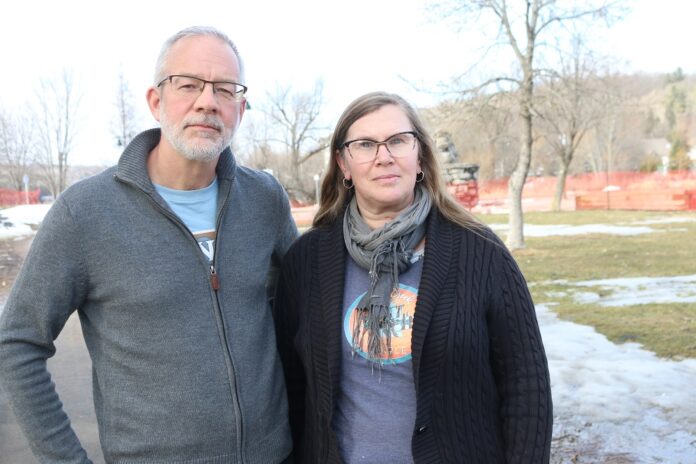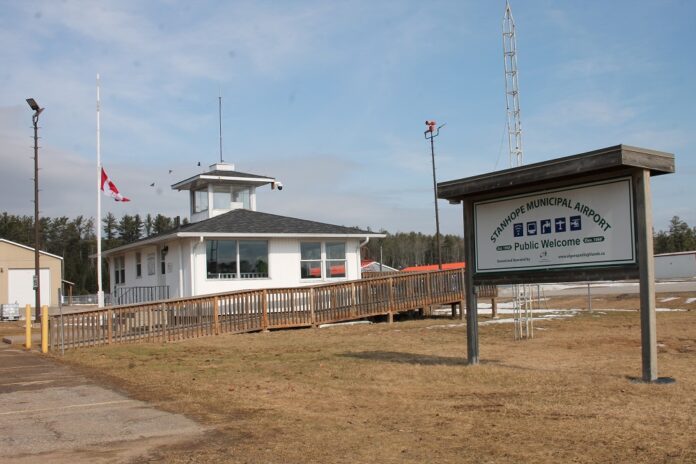The Haliburton County Huskies will square off against the Cobourg Cougars when the first round of the OJHL playoffs begins March 9 in Minden.
The Huskies had a winning weekend – beating the Toronto Junior Canadiens 6-4 at home Saturday – before pipping the Niagara Falls Canucks 2-1 Sunday – to propel themselves to a fourth-place finish in the East conference.
That pits them against the fifth place Cougars and gives them home ice advantage in the series.
They’ll open at the S.G. Nesbitt Memorial Arena this Saturday at 4 p.m.
Head coach and GM Ryan Ramsay said it was a “weird” regular season, with the Huskies dipping as low as 10th place in the East conference, and sitting in eighth for a long stretch. At times, a playoff spot seemed in doubt, but the squad rose to the challenge.
“This group’s pretty resilient,” Ramsay said. Down the stretch, the team stayed healthy and went on a roll. They are going into the playoffs healthy, with just Gavin McGaheySmith doubtful for the first round.
Preparing for Cobourg, Ramsay said the key is trying to stop Trevor Hoskin and Andy Reist. The two were in the top three in scoring with a combined 195 points. “If we can contain them a little bit, we’ll be alright.” He added they have to stick to their game plan as well.
He believes his team may have greater depth, so it’s about containing the threat and “getting some bounces.
“We’ve got a young group, they’re pretty excited.”
As for home ice advantage, Ramsay likes that he’ll get the last change four out of a potential seven games. And if it goes to seven, the final match will be at the S.G. Nesbitt Memorial Arena.
“With our barn, and the fans, and the atmosphere in our rink, it’s a huge plus and a huge momentum shift.”
Huskies 6 Toronto 4
On March 2, the Huskies got the jump early. Patrick Saini scored his 42nd from Raine Nadeau and Charlie Fink at just 1:07.
But the Canadiens stunned the crowd with two goals in less than one minute. Nathan Phillips scored at 13:07 and then Connor Van Weelie put one behind goalie Brett Fullerton at 13:51.
However, the blue and white showed mettle as Matt Milic answered the call at 14:49 with his sixth goal of the season, from Saini. And, at 16:07, Ty Petrou recorded his 18th, from Milic and Saini to put the home side up 3-2 at the end of the first.
The Huskies then netted two late second period goals. McGahey-Smith scored his sixth at 15:06, from Tyson Rismond and Noah Lodoen. And, with just a second on the clock, Saini banged one in from Petrou and Fink to propel the blue and while to a commanding 5-2 lead.
It looked to be all over when Petrou scored his 19th, at :43 seconds of the third.
But the Canadiens made it a game when they answered with tallies at 3:24 (Dylan Bly) and 8:08 (Joel Taylor).
The Huskies, though, barred the door the rest of the way to seal the 6-4 victory. Fullerton stopped 34 shots.
Huskies 2 Canucks 1
After a scoreless first period in Niagara Falls, Saini opened the scoring at 4:20 of the second with his 44th goal of the season, assisted by Fink.
Just over a minute later, the Canucks answered with a Wolf Giles marker at 5:35, from Alex Hebblewaite and Braeden O’Keefe.
However, Lodoen scored the eventual game-winner at 8:22, from Aidan Yarde and Milic.
Fullerton turned aside 24 of 25 shots while the Huskies peppered Logan Snyder in the Canucks’ net with 34 shots.











